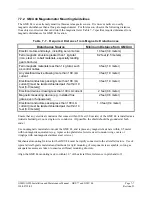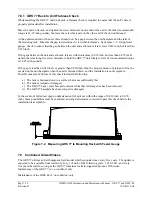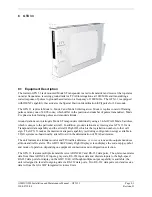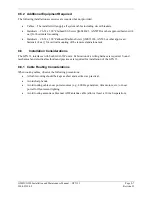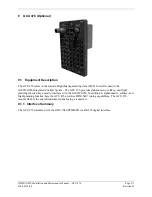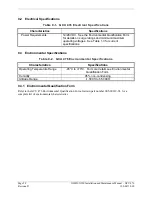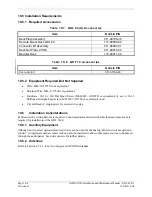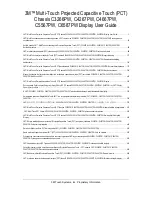
Page 8-8
G900X/G950 Installation and Maintenance Manual – GTX 33
Revision D
190-00719-00
8.7 Mounting
Requirements
The GTX 33 mounting surface must be capable of providing structural support and electrical bond to the
aircraft to minimize radiated EMI and provide protection from High-Intensity Radiation Fields (HIRF).
The GTX 33 can be mounted using the G900X/G950 main system rack, or may be mounted remotely if
desired. Figures 8-1 and 8-2 show the GTX 33 unit racks. The unit rack is fastened to the main system
rack using the nutplate kit listed in Section 8.5.1. The installer must provide any additional remote
mounting equipment.
8.7.1
Remote Mounted Stand-Alone Rack Considerations
The remote rack can be installed in a variety of locations, such as the electronics bay, under a seat or on
an avionics shelf behind the rear baggage area. Leave sufficient clearance between the GTX 33 and any
obstruction. Install the rack in accordance with AC 43.13-2A Chapter 2 “Radio Installations”. The rack
should be mounted to a surface known to have sufficient structural integrity to withstand additional inertia
forces imposed by a 4.3-pound (1.95 kg) unit. If it is necessary to build a shelf or bracket to mount the
GTX 33 stand-alone rack or it is not certain that the chosen location is of sufficient structural integrity.
Figures D-33 and D-34 give the GTX 33 stand-alone rack dimensions. The rack can be mounted
vertically using four 8-32 pan head screws (MS35206, AN526 or other approved fastener). It can also be
mounted horizontally using four 6-32 100° counter-sunk flathead screws (MS24693, AN507R or other
approved fastener). Ensure that the GTX 33 chassis has a ground path to the airframe by having at least
one mounting screw in contact with the airframe. If more water-resistance is desired, the rack should be
installed in the upright vertical orientation only, otherwise, the rack may be mounted in either vertical or
horizontal orientation.
After the cable assemblies are made and wiring installed to the rack back plate, route wiring bundle as
appropriate. Use cable ties to secure the cable assemblies and coax to provide strain relief for the cable
assemblies.




